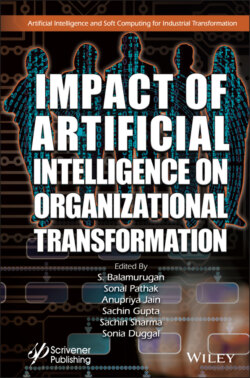Читать книгу Impact of Artificial Intelligence on Organizational Transformation - Группа авторов - Страница 55
3.3 Journey of AI in HR “From Where Till What”
ОглавлениеAdvent of electronic computers in 1941 opened the successful use of machine in humans’ day-to-day activity. The early research in 1949 showed the possibility of using the stored data in Machines, and by the late 1950, the link between the Human intelligence and stored information was established. By the initiation of Norbert Wiener, it was found that showing intelligence was the outcome of the mechanism of feedback system that was easy to read by the smart Machines. In 1955, Newell and Simon created “The Logic Theorist” which was the first of its kind AI program. Later, John McCarthy coined the term AI. Slowly and steadily, it creeps into the professional world and became a part and parcel of day-to-day life. As per the survey done by various firms, it is found that AI in HR is gaining tremendous growth, and organizations are adopting it.
Figure 3.2 Use of AI in HR. Oracle AI usage in different business functions, showing the % of respondents. Source: McKinsey.
According to the Ji-A Min [3], today, 38% of the organizations are already using the AI and 62% are expecting to start using the AI for day-to-day work by the end of this year.
Another survey done by Johbersin of Delottie in their survey Delottie Human Capital trends found that 33% of the employees hope that their job would become better by the use of AI in near future. The study shows that AI and robotics are in flowing faster in the lives of the humans as before. The research was carried out on 10,400 respondents of 104 companies and 38% of the employees believe that AI with the help of robotics and animation would be fully implemented in their company within 5 years. The research found that 77% believe that AI would result in better job, while 33% expect that AI would do more human task. In addition, 50% thought that they would need to retrain the worker to make them able to work side by side along with the machines. Only 20% of the respondents took it as a threat on their job.
Survey by the Gallup found that 31% of the employees are working remotely without office and helping them with tools of team management, live chat through video conferencing, and other ways to coach and engage the people.
As per the survey done in 2018 by McKinsey on AI, the report showed that 47% of the business has added at least one AI capability in the process of the business in contrast to only 2% in 2017. The growth of more than the double shows the increasing popularity and use of AI in business.
Another research was done by Oracle on the uses of advance analytics in HR department to find the utilization of AI in various field of Human Resource, and the finding showed that the use of AI in HR would help the organization to create a dataset of the prospective candidates, past employees for rehiring, and current employees to create a mix of the fertile environment (Figure 3.2).
As per the survey done by the IBM, 6,000 HR professionals admitted the importance of AI-added cognitive computers in transforming the HR and employees experience. Their research showed that CHROs and CEOs are recognizing the advantages AI can bring to the HR domain by the help of the cognitive computers. They found that it can help in addressing the new talent, on board hiring, personal coaching, vacation planning, meeting reviews, and personal guidance on the health and professional matters judging on the temperaments from previous work experience (Figure 3.3).
Investment in AI is growing at very high rate and it is predicated that percentage of AI would rise from 12.5$ billion in 2017 to 46%$ billion by 2020. It will have a great effect on across the world.
Figure 3.3 Need of AI in HR. https://www.aihr.com/blog/ai-in-hr-impact-adoption-automation
